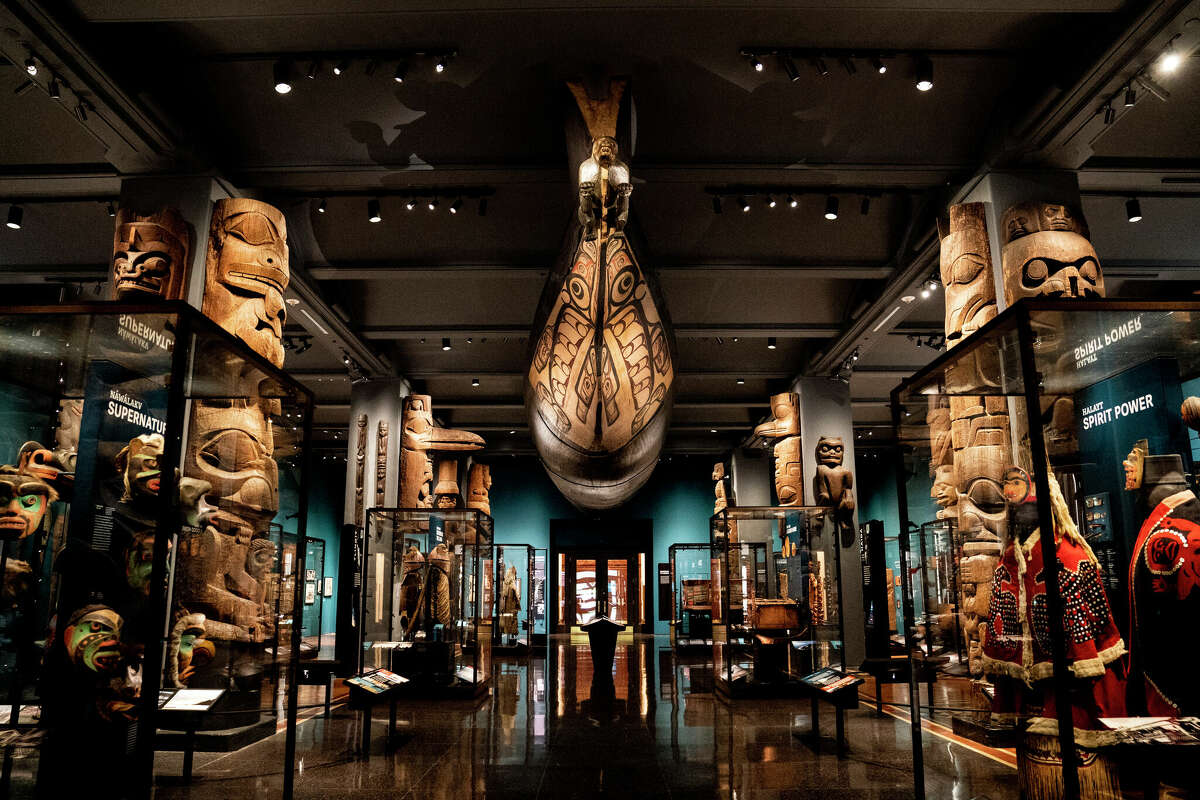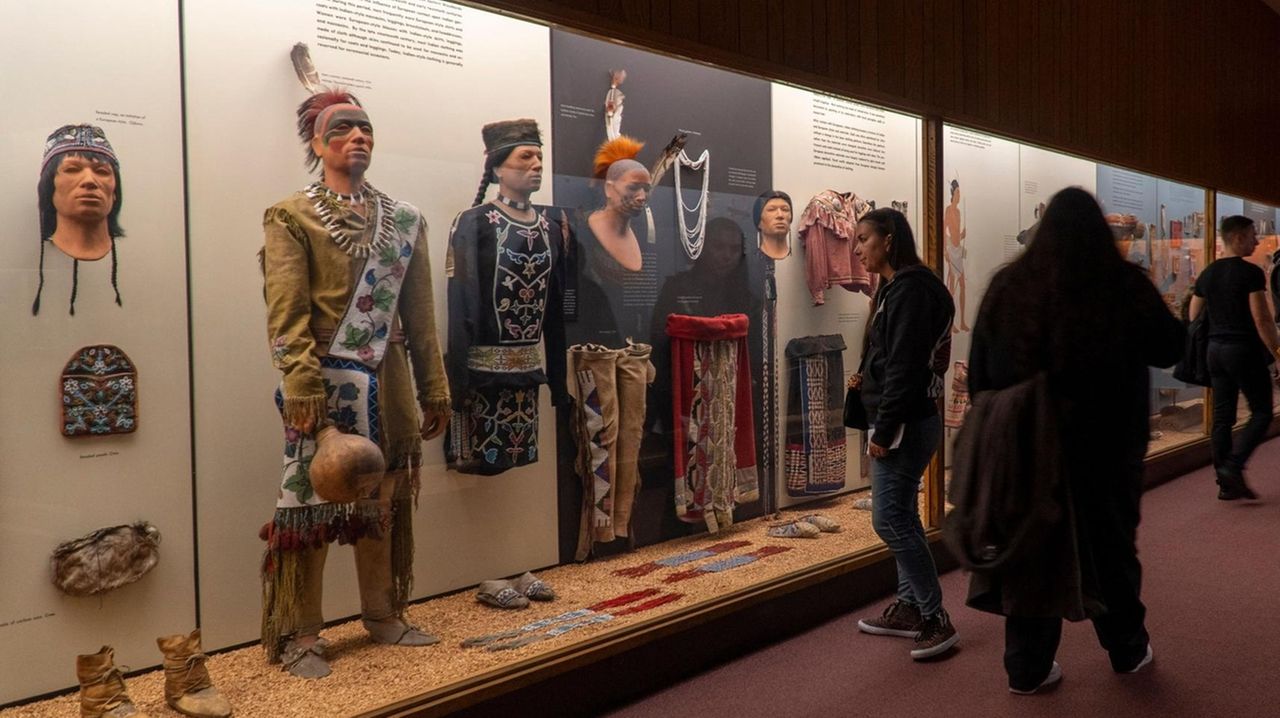
Evaluating Prominent Native American Museums for Historical Context: A Comprehensive Analysis
The quest to identify the "best" Native American museum for historical context is inherently complex, as the notion of "best" is subjective and dependent on an individual’s specific interests, geographical focus, and interpretive priorities. However, several institutions stand out for their profound commitment to presenting the rich, multifaceted, and often challenging historical narratives of Indigenous peoples in North America. These museums distinguish themselves through their rigorous scholarship, ethical curatorial practices, engagement with Indigenous communities, and the breadth and depth of their collections and interpretive frameworks. This analysis will delve into the critical criteria for evaluating such institutions and highlight prominent examples that collectively offer an unparalleled understanding of Native American historical context.
Defining "Historical Context" in the Native American Museum Landscape
For Native American history, "historical context" extends far beyond mere chronological accounts or artifact display. It encompasses:
- Indigenous Perspectives: Prioritizing the voices, worldviews, and epistemologies of Native peoples themselves, moving beyond colonial interpretations.
- Continuity and Change: Demonstrating the dynamic nature of Indigenous cultures, acknowledging both enduring traditions and adaptations over millennia.
- Trauma and Resilience: Addressing the profound impacts of colonization, dispossession, and assimilation policies, alongside narratives of resistance, survival, and cultural revitalization.
- Sovereignty and Self-Determination: Highlighting the political and social structures of Native nations and their ongoing struggles for autonomy.
- Material Culture as Narrative: Interpreting artifacts not merely as objects, but as carriers of cultural meaning, historical events, and artistic expression.
- Connection to Land and Environment: Emphasizing the inextricable link between Indigenous cultures and their ancestral territories.
- Contemporary Relevance: Bridging historical narratives with the present-day lives, challenges, and achievements of Native communities.

Key Criteria for Evaluation
To assess which museums excel in providing comprehensive historical context, the following criteria are paramount:
- Indigenous Curation and Governance: The degree to which Native scholars, artists, and community members are involved in the conceptualization, interpretation, and management of exhibitions and collections.
- Scope and Depth of Collections: The quantity, quality, and representativeness of artifacts, archival materials, and artistic works from diverse Indigenous nations and historical periods.
- Interpretive Frameworks: The sophistication and nuance of the narratives presented, moving beyond stereotypes and simplistic portrayals.
- Ethical Practices: Adherence to principles such as the Native American Graves Protection and Repatriation Act (NAGPRA), respectful display of sacred objects, and transparent provenance research.
- Educational Programming and Public Engagement: The availability of resources for learning, dialogue, and community interaction, catering to diverse audiences.
- Research and Scholarship: The institution’s contribution to academic discourse, publication of scholarly works, and support for Indigenous research initiatives.
- Commitment to Decolonization: Active efforts to challenge colonial legacies within museum practices and narratives.
Prominent Institutions for Historical Context
While no single institution can encapsulate the entirety of Native American history, several museums have made significant strides in providing profound historical context:
1. National Museum of the American Indian (NMAI), Smithsonian Institution (Washington, D.C. and New York City)
The NMAI stands as a preeminent institution for understanding Native American history on a national and international scale. Its establishment in 1989 marked a paradigm shift in museum practice, explicitly mandating that the museum be "in consultation and collaboration with Native Americans."
- Indigenous Voice: A defining characteristic of NMAI is its commitment to centering Indigenous voices. Its permanent exhibitions, such as "Our Universes: Traditional Knowledge Shapes Our World," "Our Peoples: Native American Identities and Cultures," and "Nation to Nation: Treaties Between the United States and American Indian Nations," are developed through extensive collaboration with Native communities. Each exhibit typically features multiple tribal perspectives, offering a rich tapestry of narratives rather than a singular, authoritative voice. This approach allows visitors to experience history through the lens of those who lived it, fostering a deeper, more empathetic understanding.
- Scope and Depth: With two major facilities—the iconic museum on the National Mall in Washington, D.C., and the George Gustav Heye Center in New York City—NMAI houses one of the world’s most extensive collections of Native American art and artifacts, numbering over 800,000 objects. This vast collection spans over 12,000 years of history, representing more than 1,200 Indigenous cultures across the Western Hemisphere. The breadth allows for comprehensive historical exploration, from pre-Columbian societies to contemporary issues.
- Interpretive Frameworks: NMAI excels in challenging conventional historical narratives. "Nation to Nation," for instance, meticulously examines the complex history of treaty relationships, highlighting Indigenous sovereignty and the U.S. government’s often-broken promises. This approach deconstructs dominant historical myths and provides crucial context for understanding ongoing land rights issues and political struggles. The museum also emphasizes the spiritual and cultural dimensions of Indigenous life, demonstrating how traditional knowledge systems have shaped societies and continue to be vital.
- Challenges and Evolution: While lauded for its groundbreaking approach, NMAI faced initial criticisms regarding its interpretive clarity and thematic organization in its early years. However, the institution has continually evolved, refining its exhibitions and educational programs to enhance accessibility and deepen engagement, solidifying its role as a leading authority in Native American historical representation.
2. The Heard Museum (Phoenix, Arizona)
The Heard Museum, established in 1929, has grown into one of the most respected museums dedicated to the advancement of American Indian art and culture, particularly strong in its historical context of the Southwest.
- Regional Focus and Deep Engagement: The Heard Museum offers an unparalleled historical context for the Indigenous peoples of the American Southwest. Its proximity to numerous tribal nations in Arizona and New Mexico has fostered deep, enduring relationships with communities like the Navajo (Diné), Hopi, Zuni, and Apache. This allows for authentic and nuanced historical presentations, often developed in direct partnership with tribal elders and cultural experts.
- Continuity of Culture: Exhibitions at the Heard masterfully demonstrate the continuity of Indigenous cultures. For example, its extensive collection of Katsina dolls, pottery, and jewelry not only showcases artistic excellence but also contextualizes these objects within spiritual beliefs, social structures, and historical trade networks. The museum effectively bridges historical craftsmanship with contemporary artistic expressions, illustrating how traditions evolve while maintaining their cultural essence.
- Educational Programming: The Heard is renowned for its educational initiatives, including the annual Heard Museum Guild Indian Fair & Market, which brings thousands of Native artists and cultural practitioners to the forefront, allowing for direct interaction and historical learning. This event, alongside its permanent galleries on history, arts, and cultural traditions, provides a vibrant, living historical context.
- Addressing Difficult Histories: The Heard also tackles difficult historical subjects, such as the impact of boarding schools, with sensitivity and scholarly rigor, offering a comprehensive view of the challenges faced by Native communities while celebrating their resilience.
3. Eiteljorg Museum of American Indians and Western Art (Indianapolis, Indiana)
The Eiteljorg Museum, located in the heart of the Midwest, provides a vital counter-narrative to the often West-centric focus of Native American history.
- Broad Geographical and Thematic Scope: While its name includes "Western Art," the Eiteljorg’s Native American collection is geographically diverse, offering significant historical context for the Indigenous peoples of the Great Lakes, Plains, and Southwest. Its permanent collection, "Expressions of Native American Art and Culture," provides an excellent overview of various tribal histories, artistic traditions, and cultural adaptations across different regions and time periods.
- Interweaving History and Art: The museum expertly integrates historical narratives with artistic expressions, demonstrating how art serves as a powerful medium for cultural preservation, historical documentation, and political statement. This approach enriches the historical context by illustrating the aesthetic and symbolic dimensions of Indigenous life.
- Engagement with Contemporary Issues: The Eiteljorg actively connects historical narratives to contemporary Native American experiences through its exhibitions and public programs, ensuring that visitors understand the ongoing relevance of Indigenous history.
4. The Autry Museum of the American West (Los Angeles, California)
While the Autry’s scope is broader, encompassing the entire American West, its Native American galleries and programs are increasingly vital for historical context.
- Decolonizing the West: The Autry has made significant strides in decolonizing the narrative of the American West, moving away from romanticized cowboy myths to include the often-overlooked and complex histories of Indigenous peoples. Its "Connecting to the Land" gallery, for instance, provides essential historical context on the deep connections between Native communities and their ancestral lands in California and beyond.
- Exhibitions and Public Programs: The museum regularly hosts groundbreaking exhibitions and public programs that delve into specific aspects of Native American history, such as the history of California missions and their impact on Indigenous populations, or contemporary Indigenous art and activism rooted in historical struggles.
- Research and Collections: The Autry houses significant collections of Native American materials, particularly from California and the Southwest, which serve as crucial resources for understanding regional histories.
5. Tribal Museums and Cultural Centers
Crucially, any comprehensive discussion of Native American historical context must acknowledge the invaluable role of tribal museums and cultural centers. These institutions, owned and operated by specific Native nations, offer the most authentic and deeply rooted historical perspectives.
- Authenticity and Self-Representation: Tribal museums, such as the Mashantucket Pequot Museum & Research Center (Mashantucket, Connecticut) or the Cherokee Nation’s various cultural sites (Tahlequah, Oklahoma), are unparalleled in their ability to present history from an unmediated, community-specific viewpoint. They tell their own stories, in their own voices, often using traditional languages and oral histories.
- Local and Specific Context: These institutions provide hyper-local and highly specific historical context that larger national museums cannot replicate. They delve into the nuances of a particular tribe’s history, language, spiritual practices, and relationship to their ancestral lands, offering an intimate and profound understanding.
- Community Engagement: Tribal museums are living cultural centers, deeply integrated into their communities. They serve as repositories of knowledge, sites for language revitalization, and spaces for intergenerational learning, ensuring that historical context is not merely preserved but actively lived and transmitted.
Conclusion
Identifying a single "best" Native American museum for historical context is an oversimplification of a rich and diverse field. Instead, a holistic understanding emerges from engaging with a variety of institutions, each offering unique strengths. The National Museum of the American Indian provides a crucial national and hemispheric overview, driven by Indigenous voices. The Heard Museum offers unparalleled depth in the Southwest, while the Eiteljorg and Autry contribute significantly to regional and thematic understandings, particularly in decolonizing narratives. However, for the most authentic, community-driven, and specific historical context, tribal museums and cultural centers are indispensable.
Ultimately, the "best" approach for understanding Native American historical context is to explore these institutions collectively. Together, they form a mosaic of narratives, perspectives, and experiences that challenge stereotypes, illuminate resilience, and foster a deeper appreciation for the enduring legacy and contemporary vitality of Indigenous peoples in North America. These institutions are not merely custodians of the past; they are dynamic spaces where history is interpreted, re-evaluated, and connected to the living present, serving as vital bridges for cross-cultural understanding and reconciliation.



